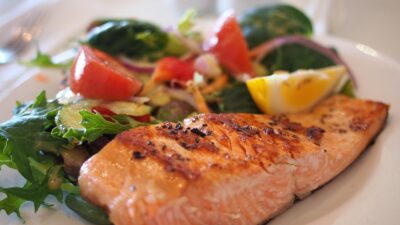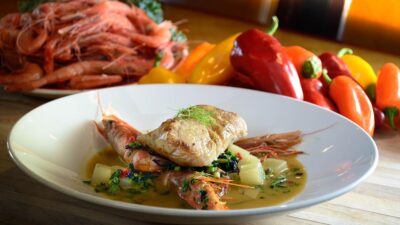In today’s health-conscious world, more and more people are leaning toward plant-based diets for their myriad of benefits—ranging from improved health to environmental sustainability. However, a common concern among those making the switch is protein intake. Luckily, the vegetarian and vegan realms are brimming with protein-packed options that don’t just fuel your body but also delight your taste buds. Here are some high-protein vegetarian and vegan options that are sure to impress!
1. Legumes: The Powerhouses of Protein
Chickpeas
Chickpeas are incredibly versatile. From hummus and falafel to salads and soups, these little legumes pack about 15 grams of protein per cup cooked. They are also high in fiber, making them a filling addition to any meal.
Lentils
Lentils offer an impressive 18 grams of protein per cooked cup. Additionally, they cook relatively quickly and can be used in various dishes, from stews and curries to salads and veggie burgers.
Black Beans
Ideal for tacos, burritos, or salads, black beans provide approximately 15 grams of protein per cooked cup. They also add a rich, hearty flavor to any dish.
2. Nuts and Seeds: Small but Mighty
Chia Seeds
These tiny seeds are a protein powerhouse, offering around 5 grams of protein per ounce. They can be added to smoothies, oatmeal, or made into chia pudding.
Quinoa
Often mistaken for a grain, quinoa is actually a seed and is one of the few plant foods that contains all nine essential amino acids. A single cup of cooked quinoa packs about 8 grams of protein.
Almonds
Almonds not only serve as a great snack but also provide 6 grams of protein per ounce. They can be added to salads, yogurt, or blended into smoothies.
3. Soy Products: The Plant-Based Protein Kings
Tofu
Tofu is a classic in vegetarian and vegan cuisine. It boasts around 10 grams of protein per half-cup serving and can be marinated, grilled, stir-fried, or blended into smoothies. Silken tofu can also be used as a creamy base for desserts!
Tempeh
A fermented soy product, tempeh contains around 30 grams of protein per cup. Its nutty flavor is excellent for stir-fries, salads, or as a meat substitute in various dishes.
Edamame
Young soybeans, rich in flavor, offer about 17 grams of protein per cup when cooked. They make for a fantastic snack, appetizer, or salad topping.
4. Dairy Alternatives: Not Just for Milk
Greek Yogurt
For vegetarians, Greek yogurt is a great option, with about 20 grams of protein per cup. It can be enjoyed with fruit, as a smoothie base, or even in savory dishes.
Vegan Protein Powders
For those following a vegan diet, protein powders derived from pea, hemp, or brown rice can offer a convenient way to boost protein intake. These can be added to smoothies, baked goods, or oatmeal to enhance nutritional content.
5. Whole Grains: A Nutritional Staple
Farro
This ancient grain is packed with 6 grams of protein per cooked cup. Its chewy texture makes it an excellent addition to salads and soups.
Barley
Another grain that not only fills you up but also provides about 3.5 grams of protein per cooked cup. Its nutty flavor works wonders in grain bowls and stews.
Buckwheat
Despite its name, buckwheat is gluten-free and contains about 6 grams of protein per cup. It can be used in porridge, pancakes, or as a base for a veggie bowl.
6. Creative High-Protein Recipes
Protein-Packed Smoothie
Blend together a banana, a tablespoon of peanut butter, a scoop of vegan protein powder, and a cup of almond milk for a delicious, protein-rich start to your day.
Lentil and Chickpea Salad
This refreshing salad can be made with cooked lentils, chickpeas, diced cucumbers, tomatoes, red onion, and a lemon dressing for a nutrient-dense meal that’s bursting with flavor.
Tofu Stir-Fry
Marinate cubes of tofu in soy sauce and sesame oil, stir-fry with your favorite vegetables like bell peppers and broccoli, and serve over brown rice or quinoa for a delightful dinner.
Conclusion
Eating a vegetarian or vegan diet doesn’t mean you have to skimp on protein. The options listed above demonstrate just how flavorful, diverse, and satisfying plant-based proteins can be. So whether you’re a lifelong vegetarian, a curious flexitarian, or completely new to plant-based eating, these high-protein options are guaranteed to wow your palate while nourishing your body. Make the swap and savor the variety that Mother Nature has to offer!



